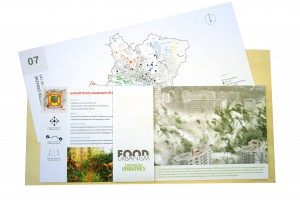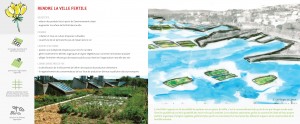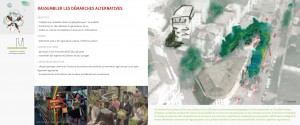From its findings FUI puts forth 10 urban strategies that summarize the lessons learned through the project’s design research. These strategies include guidelines and measures that can be applied at both the city and garden / building scale to help guide the creation of new urban quality through the process of planning, urban design, landscape architecture and architecture. They are as follows:
1. Amplify the Identity of Place – Fruits and vegetables stimulate our senses: smell, sight, touch and taste. They link us to cultures, our history and to other people.
2. Assemble Alternative and Diverse Concerns – Participation in the rich dynamics of citizen initiatives encourages a sense of neighborhood belonging.
3. Link Knowledge with Practice – Existing networks serve to spread knowledge especially at points of exchange: schools, hospitals, community centers, etc..
4. Create Social Opportunities – Community and micro-plot gardens favor diversity by reinforcing the bonds and exchanges between neighbors and citizens. They can serve as a form of basic public infrastructure to enrich social dynamics.
5. Guarantee Ecological Benefits – Water supplies can be locally sourced and the protection of this resource in conjunction with the reinforcement of the city’s biodiversity and ecological networks are essential to increasing the city’s urban quality.
6. Extend Urban Economies – Connectivity reinforces access to centers of food production thus welcoming further economic development around these poles of urban quality.
7. Manage Urban Mutation – Evidence of urbanization provides rich opportunity for food urbanism initiatives to fertilize healthy growth on strategic sites.
8. Blitz-Actions! – Impact Neighborhoods Quickly – It takes one day to change a place and encourage long-term bonds between individuals. Un- or under-used sites across the city, close to public transport, can benefit from blitz actions related to food production.
9. Develop Landscapes of Well-Being – Cultivation sites provide physical activity, stimulate social interaction, encourage healthy nutrition and reinforce our connection to the earth. They are landscapes of well-being.
10.Make the City Fertile – One makes the city more fertile by taking into consideration the vacant surfaces available for planting, encouraging local production, heightening the awareness of residents and gardeners while incorporating regular composting efforts.







